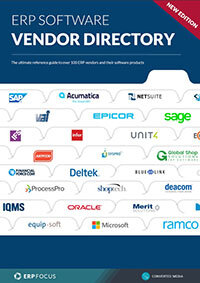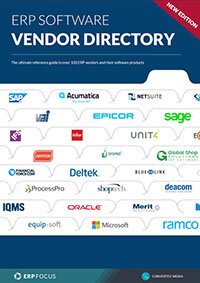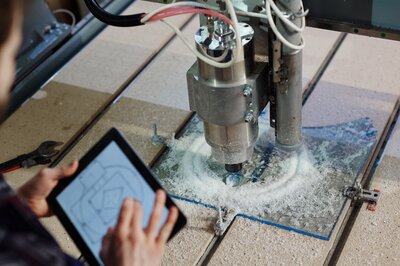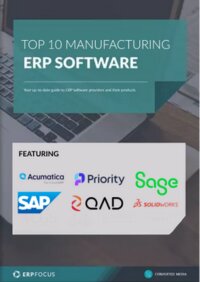How ERP can make your manufacturing processes leaner
There are lean manufacturing practitioners who say that ERP is too big and clunky to incorporate into a lean manufacturing framework. It isn’t, however, the ERP itself that gets in the way of lean manufacturing processes, but the way we choose to use it.
Kanban
Creating a flow and establishing a pull system where products only move toward your customer and principles at the heart of lean manufacturing. In the past, manufacturers tended to create long, repetitive jobs to increase efficiency which led to inventories of the wrong products. Today’s manufacturing ERP systems have reacted well.
‘Kanban’ systems, designed to facilitate leaner methods of inventory control, pass an electronic card upstream when it is time to ship a product to a customer who has ordered that product. The electronic card will pass all the way to a component supplier, as needed, through each production resource to be used making the product.
The simplest if these kanban systems create a simulated “job” after the fact and backflush component parts and production time against that job, and finish closing that job and receiving the finished product into inventory. More sophisticated methods can backflush even lot-controlled and serial-number components.
Recommended reading: find ERP vendors that subscribe to lean manufacturing principles with our completely up-to-date ERP vendor directory.
Single Minute Exchange of Dies
One of the lean principles documented at Toyota is Single Minute Exchange of Dies or SMED. Setup time throughout manufacturing is required but often is time spent not actually producing a product. Manufacturing ERP systems can include setup time as a separate part of time reported on a job and operation. The engineers will work toward processes that minimize internal setup and provide the ERP with expected time. As shop floor workers report the actual time required for setup, we can track the change and compare actual to estimated time and ensure the previous change worked and plan the next change.
Quality Built In
Another lean principle is Quality Built In. This means design a process where production is completed right the first time with no after-the-fact inspections required to be sure. Here too, manufacturing ERP systems can help. Design an inspection plan in the manufacturing ERP that prompts a shop user to input specific measurements of the in-process product before they start any work. Those measurements are recorded and the user is immediately alerted if any are out of specification.
At the end of each step users will enter measurements attesting to their work. At the beginning of the next process another user will check the measurements of the work done by the previous user. This two-step check throughout production will reduce the chance of any poor quality product actually being delivered to a customer and ERP will continuously prompt the shop users to enter their measurements.
Gemba walks, value stream mapping, visual feedback systems, poka yoke and other lean tools might not be so closely related to manufacturing ERP, but most businesses can develop queries and dashboards that will provide information as needed for these lean activities.
Despite what some might think, you can use your ERP and adhere to lean manufacturing principles at the same time.
Free white paper

ERP Software Vendor Directory
Put the most comprehensive ERP vendor directory on your desk today

Featured white papers
Related articles
-

3 New Year's Resolutions for Your Discrete Manufacturing ERP Project
Getting the best from your manufacturing ERP for the new year.
-

CMMC Compliance: What Aerospace and Defense Manufacturers Need to Know
Key insights on CMMC compliance, deadlines, and securing DoD contracts with CMMC 2.0 certificatio...
-

ERP for make-to-order manufacturing
How can ERP help your make-to-order manufacturing business thrive?




